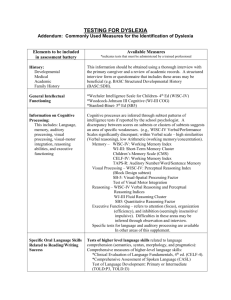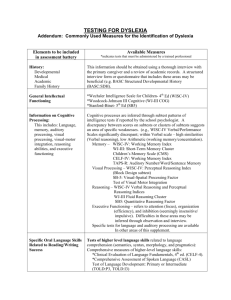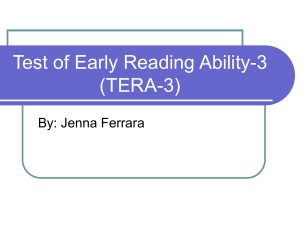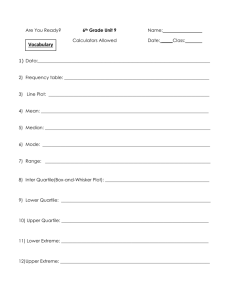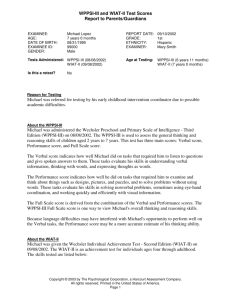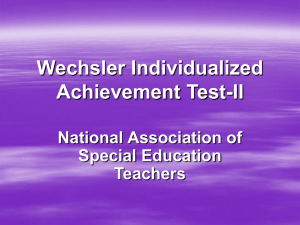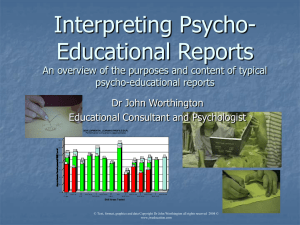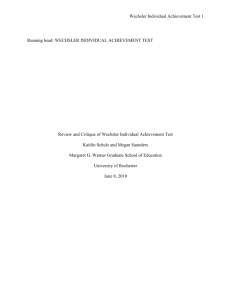Guidelines for Using and Reporting the Wechsler Individual
advertisement
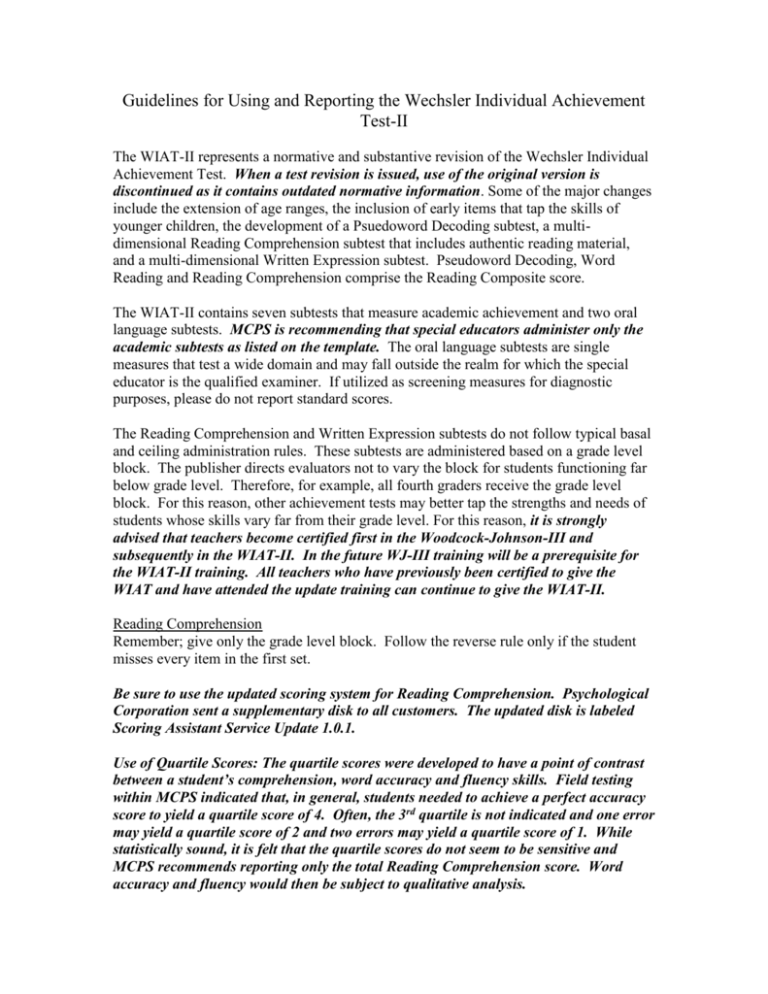
Guidelines for Using and Reporting the Wechsler Individual Achievement Test-II The WIAT-II represents a normative and substantive revision of the Wechsler Individual Achievement Test. When a test revision is issued, use of the original version is discontinued as it contains outdated normative information. Some of the major changes include the extension of age ranges, the inclusion of early items that tap the skills of younger children, the development of a Psuedoword Decoding subtest, a multidimensional Reading Comprehension subtest that includes authentic reading material, and a multi-dimensional Written Expression subtest. Pseudoword Decoding, Word Reading and Reading Comprehension comprise the Reading Composite score. The WIAT-II contains seven subtests that measure academic achievement and two oral language subtests. MCPS is recommending that special educators administer only the academic subtests as listed on the template. The oral language subtests are single measures that test a wide domain and may fall outside the realm for which the special educator is the qualified examiner. If utilized as screening measures for diagnostic purposes, please do not report standard scores. The Reading Comprehension and Written Expression subtests do not follow typical basal and ceiling administration rules. These subtests are administered based on a grade level block. The publisher directs evaluators not to vary the block for students functioning far below grade level. Therefore, for example, all fourth graders receive the grade level block. For this reason, other achievement tests may better tap the strengths and needs of students whose skills vary far from their grade level. For this reason, it is strongly advised that teachers become certified first in the Woodcock-Johnson-III and subsequently in the WIAT-II. In the future WJ-III training will be a prerequisite for the WIAT-II training. All teachers who have previously been certified to give the WIAT and have attended the update training can continue to give the WIAT-II. Reading Comprehension Remember; give only the grade level block. Follow the reverse rule only if the student misses every item in the first set. Be sure to use the updated scoring system for Reading Comprehension. Psychological Corporation sent a supplementary disk to all customers. The updated disk is labeled Scoring Assistant Service Update 1.0.1. Use of Quartile Scores: The quartile scores were developed to have a point of contrast between a student’s comprehension, word accuracy and fluency skills. Field testing within MCPS indicated that, in general, students needed to achieve a perfect accuracy score to yield a quartile score of 4. Often, the 3rd quartile is not indicated and one error may yield a quartile score of 2 and two errors may yield a quartile score of 1. While statistically sound, it is felt that the quartile scores do not seem to be sensitive and MCPS recommends reporting only the total Reading Comprehension score. Word accuracy and fluency would then be subject to qualitative analysis. Written Expression When using the original version of the WIAT, MCPS staff was asked not to report the standard score of this subtest. Field testing had indicated wide variation in scores between examiners. The WIAT-II contains more specific scoring guidelines based on a rubric style system. The Written Expression subtest is now a multidimensional measure. Tasks are administered based on the grade level of the student. Interscorer reliability, as reported by the publisher, is strong with the average Written Expression coefficient being .85 and the average reading comprehension coefficient being .84. For these reasons, MCPS is now including written expression score for the WIAT-II. If use becomes problematic in any way the guideline can be revisited. A Final Note: The WIAT-II incorporates current research on reading and writing disability and has added important elements to the test in relation to the current knowledge base. The content of the reading comprehension and written expression sub-tests are authentic in nature and a great deal of information to inform instruction can be gleaned from a student’s performance. The rubric, rather than dichotomous, based scoring system makes scoring more time consuming and variable. In addition, this test is may not be appropriate for answering diagnostic questions for all students. It should always be kept in mind that the achievement measure selected should be based on student characteristics.
